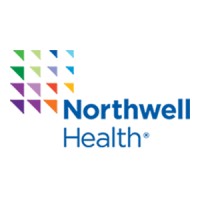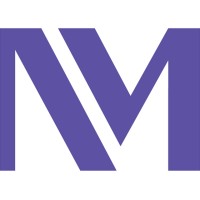
Brigham and Women's Hospital Company Cyber Security Posture
brighamandwomens.orgBoston's Brigham and Women's Hospital (BWH) is an international leader in virtually every area of medicine and has been the site of pioneering breakthroughs that have improved lives around the world. A major teaching hospital of Harvard Medical School, BWH has a legacy of excellence that continues to grow. With two outstanding hospitals, over 150 outpatient practices, and over 1,200 physicians, we serve patients from New England, throughout the United States, and from 120 countries around the world. The BWH name is a reflection of our history. In 1980 three of Boston’s oldest and most prestigious Harvard Medical School teaching hospitals - the Peter Bent Brigham Hospital, the Robert Breck Brigham Hospital, and the Boston Hospital for Women – merged to form Brigham and Women’s Hospital. As a national leader in improving health care quality and safety, we have helped to develop some of the industry’s best practices including computerized physician order entry (CPOE) to prevent medication errors. The CPOE is now a nationally-accepted safety practice. The BWH Biomedical Research Institute (BRI) is one of the most powerful biomedical research institutes in the world and the second largest recipient of National Institutes of Health (NIH) funding among independent hospitals in the United States. BWH has long had great success in research as measured by the number of important discoveries made, the size and scope of its research portfolio and the volume of publications annually. BWH is a training ground for physicians, nurses, and allied health professionals. We have 1,100 trainees in over 140 of the most sought after training programs in the world, and also host Harvard Medical School students in rotations throughout our programs. As our global health services expand, our clinical trainees have rich opportunities to contribute and learn in challenging environments around the world. Brigham and Women's Hospital is an EEO, AA, VEVRAA Employer.
BWH Company Details
brigham-and-women's-hospital
15483 employees
141544.0
62
Hospitals and Health Care
brighamandwomens.org
201
BRI_2686442
In-progress
Between 900 and 1000
This score is AI-generated and less favored by cyber insurers, who prefer the TPRM score.
 BWH Global Score
BWH Global Score.png)

Brigham and Women's Hospital Company Scoring based on AI Models
| Model Name | Date | Description | Current Score Difference | Score |
|---|---|---|---|---|
| AVERAGE-Industry | 03-12-2025 | This score represents the average cybersecurity rating of companies already scanned within the same industry. It provides a benchmark to compare an individual company's security posture against its industry peers. | N/A | Between 900 and 1000 |
Brigham and Women's Hospital Company Cyber Security News & History
| Entity | Type | Severity | Impact | Seen | Url ID | Details | View |
|---|
Brigham and Women's Hospital Company Subsidiaries

Boston's Brigham and Women's Hospital (BWH) is an international leader in virtually every area of medicine and has been the site of pioneering breakthroughs that have improved lives around the world. A major teaching hospital of Harvard Medical School, BWH has a legacy of excellence that continues to grow. With two outstanding hospitals, over 150 outpatient practices, and over 1,200 physicians, we serve patients from New England, throughout the United States, and from 120 countries around the world. The BWH name is a reflection of our history. In 1980 three of Boston’s oldest and most prestigious Harvard Medical School teaching hospitals - the Peter Bent Brigham Hospital, the Robert Breck Brigham Hospital, and the Boston Hospital for Women – merged to form Brigham and Women’s Hospital. As a national leader in improving health care quality and safety, we have helped to develop some of the industry’s best practices including computerized physician order entry (CPOE) to prevent medication errors. The CPOE is now a nationally-accepted safety practice. The BWH Biomedical Research Institute (BRI) is one of the most powerful biomedical research institutes in the world and the second largest recipient of National Institutes of Health (NIH) funding among independent hospitals in the United States. BWH has long had great success in research as measured by the number of important discoveries made, the size and scope of its research portfolio and the volume of publications annually. BWH is a training ground for physicians, nurses, and allied health professionals. We have 1,100 trainees in over 140 of the most sought after training programs in the world, and also host Harvard Medical School students in rotations throughout our programs. As our global health services expand, our clinical trainees have rich opportunities to contribute and learn in challenging environments around the world. Brigham and Women's Hospital is an EEO, AA, VEVRAA Employer.
Access Data Using Our API

Get company history
.png)
BWH Cyber Security News
Mass General Brigham Researchers Awarded ARPA-H Funding to Enhance Health Outcomes in Rural America
Mass General Brigham has been awarded three Advanced Research Projects Agency for Health (ARPA-H) contracts to deliver hospital-level care ...
Hospital services shut down following CrowdStrike outage
The CrowdStrike outage has struck healthcare, shutting down services and electronic medical records at hospitals across the US.
Hospitals seek to prevent, mitigate attacks on clinical staff
After attacks on healthcare workers soared during the COVID-19 pandemic, providers have scrambled to address heightened violence in their ...
Doctors revert to pen and paper after CrowdStrike's outage hits hospitals: ‘Every single computer was down’
Many hospitals and labs across the US and globally have had their systems shut down, leading some hospitals to cancel or delay procedures and surgeries.
Global software outage returns Boston hospitals, health care industry to pre-technology era
The outage was triggered by a faulty software update from Texas-based cybersecurity firm CrowdStrike to devices running Microsoft Windows.
Tech outage impacts local hospitals, emergency services - Boston News, Weather, Sports
Friday morning's major technology outage snarled operations at several area hospitals, forcing patients to reschedule some appointments and procedures.
BWH research data breached via Tableau
Brigham and Women's Hospital notified patients that a publicly accessible link to some personal and health information was inadvertently posted ...
Microsoft cloud outage causes airlines to ground flights
A failed tech update grounded flights, knocked banks offline and media outlets off the air across the world early Friday.
Global Microsoft CrowdStrike IT outage causes one of biggest hospital chains in America to cancel ALL elective
Global Microsoft CrowdStrike IT outage causes one of biggest hospital chains in America to cancel ALL elective surgeries, procedures and visits ...

BWH Similar Companies

R1 RCM
R1 is a provider of technology-driven solutions that make healthcare work better for both providers and patients. What does that mean for you? Joining our team is a chance to go beyond what you thought your career could accomplish. As a Great Place to Work® Certified™ (USA) organization, you’ll

Cardinal Health
Cardinal Health is a distributor of pharmaceuticals, a global manufacturer and distributor of medical and laboratory products, and a provider of performance and data solutions for healthcare facilities. With more than 50 years in business, operations in more than 30 countries and approximately 48,00

St Peters
With nearly 12,500 employees in more than 165 locations, St. Peter's Health Partners provides high-quality, compassionate care to thousands of people every day across the greater Capital Region. St. Peter's Health Partners was created in 2011 through the merger of Seton Health, Northeast Health

Northwell Health
Northwell Health is New York State’s largest health care provider and private employer, with 21 hospitals, about 900 outpatient facilities and more than 12,000 affiliated physicians. We care for over two million people annually in the New York metro area and beyond, thanks to philanthropic support

Owens & Minor
Owens & Minor, Inc. (NYSE: OMI) is a Fortune 500 global healthcare solutions company providing essential products and services that support care from the hospital to the home. For over 100 years, Owens & Minor and its affiliated brands, Apria® , Byram®, and HALYARD*, have helped to make each day be

Northwestern Medicine
Northwestern Medicine is the collaboration between Northwestern Memorial HealthCare and Northwestern University Feinberg School of Medicine around a strategic vision to transform the future of healthcare. It encompasses the research, teaching, and patient care activities of the academic medical cent

Frequently Asked Questions (FAQ) on Cybersecurity Incidents
BWH CyberSecurity History Information
Total Incidents: According to Rankiteo, BWH has faced 0 incidents in the past.
Incident Types: As of the current reporting period, BWH has not encountered any cybersecurity incidents.
Total Financial Loss: The total financial loss from these incidents is estimated to be {total_financial_loss}.
Cybersecurity Posture: The company's overall cybersecurity posture is described as Boston's Brigham and Women's Hospital (BWH) is an international leader in virtually every area of medicine and has been the site of pioneering breakthroughs that have improved lives around the world. A major teaching hospital of Harvard Medical School, BWH has a legacy of excellence that continues to grow. With two outstanding hospitals, over 150 outpatient practices, and over 1,200 physicians, we serve patients from New England, throughout the United States, and from 120 countries around the world. The BWH name is a reflection of our history. In 1980 three of Boston’s oldest and most prestigious Harvard Medical School teaching hospitals - the Peter Bent Brigham Hospital, the Robert Breck Brigham Hospital, and the Boston Hospital for Women – merged to form Brigham and Women’s Hospital. As a national leader in improving health care quality and safety, we have helped to develop some of the industry’s best practices including computerized physician order entry (CPOE) to prevent medication errors. The CPOE is now a nationally-accepted safety practice. The BWH Biomedical Research Institute (BRI) is one of the most powerful biomedical research institutes in the world and the second largest recipient of National Institutes of Health (NIH) funding among independent hospitals in the United States. BWH has long had great success in research as measured by the number of important discoveries made, the size and scope of its research portfolio and the volume of publications annually. BWH is a training ground for physicians, nurses, and allied health professionals. We have 1,100 trainees in over 140 of the most sought after training programs in the world, and also host Harvard Medical School students in rotations throughout our programs. As our global health services expand, our clinical trainees have rich opportunities to contribute and learn in challenging environments around the world. Brigham and Women's Hospital is an EEO, AA, VEVRAA Employer..
Detection and Response: The company detects and responds to cybersecurity incidents through {description_of_detection_and_response_process}.
Incident Details
Incident 1: Ransomware Attack
Title: {Incident_Title}
Description: {Brief_description_of_the_incident}
Date Detected: {Detection_Date}
Date Publicly Disclosed: {Disclosure_Date}
Date Resolved: {Resolution_Date}
Type: {Type_of_Attack}
Attack Vector: {Attack_Vector}
Vulnerability Exploited: {Vulnerability}
Threat Actor: {Threat_Actor}
Motivation: {Motivation}
Incident 2: Data Breach
Title: {Incident_Title}
Description: {Brief_description_of_the_incident}
Date Detected: {Detection_Date}
Date Publicly Disclosed: {Disclosure_Date}
Date Resolved: {Resolution_Date}
Type: {Type_of_Attack}
Attack Vector: {Attack_Vector}
Vulnerability Exploited: {Vulnerability}
Threat Actor: {Threat_Actor}
Motivation: {Motivation}
Common Attack Types: As of now, the company has not encountered any reported incidents involving common cyberattacks.
Identification of Attack Vectors: The company identifies the attack vectors used in incidents through {description_of_identification_process}.
Impact of the Incidents
Incident 1: Ransomware Attack
Financial Loss: {Financial_Loss}
Data Compromised: {Data_Compromised}
Systems Affected: {Systems_Affected}
Downtime: {Downtime}
Operational Impact: {Operational_Impact}
Conversion Rate Impact: {Conversion_Rate_Impact}
Revenue Loss: {Revenue_Loss}
Customer Complaints: {Customer_Complaints}
Brand Reputation Impact: {Brand_Reputation_Impact}
Legal Liabilities: {Legal_Liabilities}
Identity Theft Risk: {Identity_Theft_Risk}
Payment Information Risk: {Payment_Information_Risk}
Incident 2: Data Breach
Financial Loss: {Financial_Loss}
Data Compromised: {Data_Compromised}
Systems Affected: {Systems_Affected}
Downtime: {Downtime}
Operational Impact: {Operational_Impact}
Conversion Rate Impact: {Conversion_Rate_Impact}
Revenue Loss: {Revenue_Loss}
Customer Complaints: {Customer_Complaints}
Brand Reputation Impact: {Brand_Reputation_Impact}
Legal Liabilities: {Legal_Liabilities}
Identity Theft Risk: {Identity_Theft_Risk}
Payment Information Risk: {Payment_Information_Risk}
Average Financial Loss: The average financial loss per incident is {average_financial_loss}.
Commonly Compromised Data Types: The types of data most commonly compromised in incidents are {list_of_commonly_compromised_data_types}.
Incident 1: Ransomware Attack
Entity Name: {Entity_Name}
Entity Type: {Entity_Type}
Industry: {Industry}
Location: {Location}
Size: {Size}
Customers Affected: {Customers_Affected}
Incident 2: Data Breach
Entity Name: {Entity_Name}
Entity Type: {Entity_Type}
Industry: {Industry}
Location: {Location}
Size: {Size}
Customers Affected: {Customers_Affected}
Response to the Incidents
Incident 1: Ransomware Attack
Incident Response Plan Activated: {Yes/No}
Third Party Assistance: {Yes/No}
Law Enforcement Notified: {Yes/No}
Containment Measures: {Containment_Measures}
Remediation Measures: {Remediation_Measures}
Recovery Measures: {Recovery_Measures}
Communication Strategy: {Communication_Strategy}
Adaptive Behavioral WAF: {Adaptive_Behavioral_WAF}
On-Demand Scrubbing Services: {On_Demand_Scrubbing_Services}
Network Segmentation: {Network_Segmentation}
Enhanced Monitoring: {Enhanced_Monitoring}
Incident 2: Data Breach
Incident Response Plan Activated: {Yes/No}
Third Party Assistance: {Yes/No}
Law Enforcement Notified: {Yes/No}
Containment Measures: {Containment_Measures}
Remediation Measures: {Remediation_Measures}
Recovery Measures: {Recovery_Measures}
Communication Strategy: {Communication_Strategy}
Adaptive Behavioral WAF: {Adaptive_Behavioral_WAF}
On-Demand Scrubbing Services: {On_Demand_Scrubbing_Services}
Network Segmentation: {Network_Segmentation}
Enhanced Monitoring: {Enhanced_Monitoring}
Incident Response Plan: The company's incident response plan is described as {description_of_incident_response_plan}.
Third-Party Assistance: The company involves third-party assistance in incident response through {description_of_third_party_involvement}.
Data Breach Information
Incident 2: Data Breach
Type of Data Compromised: {Type_of_Data}
Number of Records Exposed: {Number_of_Records}
Sensitivity of Data: {Sensitivity_of_Data}
Data Exfiltration: {Yes/No}
Data Encryption: {Yes/No}
File Types Exposed: {File_Types}
Personally Identifiable Information: {Yes/No}
Prevention of Data Exfiltration: The company takes the following measures to prevent data exfiltration: {description_of_prevention_measures}.
Handling of PII Incidents: The company handles incidents involving personally identifiable information (PII) through {description_of_handling_process}.
Ransomware Information
Incident 1: Ransomware Attack
Ransom Demanded: {Ransom_Amount}
Ransom Paid: {Ransom_Paid}
Ransomware Strain: {Ransomware_Strain}
Data Encryption: {Yes/No}
Data Exfiltration: {Yes/No}
Ransom Payment Policy: The company's policy on paying ransoms in ransomware incidents is described as {description_of_ransom_payment_policy}.
Data Recovery from Ransomware: The company recovers data encrypted by ransomware through {description_of_data_recovery_process}.
Regulatory Compliance
Incident 1: Ransomware Attack
Regulations Violated: {Regulations_Violated}
Fines Imposed: {Fines_Imposed}
Legal Actions: {Legal_Actions}
Regulatory Notifications: {Regulatory_Notifications}
Incident 2: Data Breach
Regulations Violated: {Regulations_Violated}
Fines Imposed: {Fines_Imposed}
Legal Actions: {Legal_Actions}
Regulatory Notifications: {Regulatory_Notifications}
Regulatory Frameworks: The company complies with the following regulatory frameworks regarding cybersecurity: {list_of_regulatory_frameworks}.
Ensuring Regulatory Compliance: The company ensures compliance with regulatory requirements through {description_of_compliance_measures}.
Lessons Learned and Recommendations
Incident 1: Ransomware Attack
Lessons Learned: {Lessons_Learned}
Incident 2: Data Breach
Lessons Learned: {Lessons_Learned}
Incident 1: Ransomware Attack
Recommendations: {Recommendations}
Incident 2: Data Breach
Recommendations: {Recommendations}
Key Lessons Learned: The key lessons learned from past incidents are {list_of_key_lessons_learned}.
Implemented Recommendations: The company has implemented the following recommendations to improve cybersecurity: {list_of_implemented_recommendations}.
References
Additional Resources: Stakeholders can find additional resources on cybersecurity best practices at {list_of_additional_resources}.
Investigation Status
Incident 1: Ransomware Attack
Investigation Status: {Investigation_Status}
Incident 2: Data Breach
Investigation Status: {Investigation_Status}
Communication of Investigation Status: The company communicates the status of incident investigations to stakeholders through {description_of_communication_process}.
Stakeholder and Customer Advisories
Incident 1: Ransomware Attack
Stakeholder Advisories: {Stakeholder_Advisories}
Customer Advisories: {Customer_Advisories}
Incident 2: Data Breach
Stakeholder Advisories: {Stakeholder_Advisories}
Customer Advisories: {Customer_Advisories}
Advisories Provided: The company provides the following advisories to stakeholders and customers following an incident: {description_of_advisories_provided}.
Initial Access Broker
Incident 1: Ransomware Attack
Entry Point: {Entry_Point}
Reconnaissance Period: {Reconnaissance_Period}
Backdoors Established: {Backdoors_Established}
High Value Targets: {High_Value_Targets}
Data Sold on Dark Web: {Yes/No}
Incident 2: Data Breach
Entry Point: {Entry_Point}
Reconnaissance Period: {Reconnaissance_Period}
Backdoors Established: {Backdoors_Established}
High Value Targets: {High_Value_Targets}
Data Sold on Dark Web: {Yes/No}
Monitoring and Mitigation of Initial Access Brokers: The company monitors and mitigates the activities of initial access brokers through {description_of_monitoring_and_mitigation_measures}.
Post-Incident Analysis
Incident 1: Ransomware Attack
Root Causes: {Root_Causes}
Corrective Actions: {Corrective_Actions}
Incident 2: Data Breach
Root Causes: {Root_Causes}
Corrective Actions: {Corrective_Actions}
Post-Incident Analysis Process: The company's process for conducting post-incident analysis is described as {description_of_post_incident_analysis_process}.
Corrective Actions Taken: The company has taken the following corrective actions based on post-incident analysis: {list_of_corrective_actions_taken}.
Additional Questions
General Information
Ransom Payment History: The company has {paid/not_paid} ransoms in the past.
Last Ransom Demanded: The amount of the last ransom demanded was {last_ransom_amount}.
Last Attacking Group: The attacking group in the last incident was {last_attacking_group}.
Incident Details
Most Recent Incident Detected: The most recent incident detected was on {most_recent_incident_detected_date}.
Most Recent Incident Publicly Disclosed: The most recent incident publicly disclosed was on {most_recent_incident_publicly_disclosed_date}.
Most Recent Incident Resolved: The most recent incident resolved was on {most_recent_incident_resolved_date}.
Impact of the Incidents
Highest Financial Loss: The highest financial loss from an incident was {highest_financial_loss}.
Most Significant Data Compromised: The most significant data compromised in an incident was {most_significant_data_compromised}.
Most Significant System Affected: The most significant system affected in an incident was {most_significant_system_affected}.
Response to the Incidents
Third-Party Assistance in Most Recent Incident: The third-party assistance involved in the most recent incident was {third_party_assistance_in_most_recent_incident}.
Containment Measures in Most Recent Incident: The containment measures taken in the most recent incident were {containment_measures_in_most_recent_incident}.
Data Breach Information
Most Sensitive Data Compromised: The most sensitive data compromised in a breach was {most_sensitive_data_compromised}.
Number of Records Exposed: The number of records exposed in the most significant breach was {number_of_records_exposed}.
Ransomware Information
Highest Ransom Demanded: The highest ransom demanded in a ransomware incident was {highest_ransom_demanded}.
Highest Ransom Paid: The highest ransom paid in a ransomware incident was {highest_ransom_paid}.
Regulatory Compliance
Highest Fine Imposed: The highest fine imposed for a regulatory violation was {highest_fine_imposed}.
Most Significant Legal Action: The most significant legal action taken for a regulatory violation was {most_significant_legal_action}.
Lessons Learned and Recommendations
Most Significant Lesson Learned: The most significant lesson learned from past incidents was {most_significant_lesson_learned}.
Most Significant Recommendation Implemented: The most significant recommendation implemented to improve cybersecurity was {most_significant_recommendation_implemented}.
References
Most Recent Source: The most recent source of information about an incident is {most_recent_source}.
Most Recent URL for Additional Resources: The most recent URL for additional resources on cybersecurity best practices is {most_recent_url}.
Investigation Status
Current Status of Most Recent Investigation: The current status of the most recent investigation is {current_status_of_most_recent_investigation}.
Stakeholder and Customer Advisories
Most Recent Stakeholder Advisory: The most recent stakeholder advisory issued was {most_recent_stakeholder_advisory}.
Most Recent Customer Advisory: The most recent customer advisory issued was {most_recent_customer_advisory}.
Initial Access Broker
Most Recent Entry Point: The most recent entry point used by an initial access broker was {most_recent_entry_point}.
Most Recent Reconnaissance Period: The most recent reconnaissance period for an incident was {most_recent_reconnaissance_period}.
Post-Incident Analysis
Most Significant Root Cause: The most significant root cause identified in post-incident analysis was {most_significant_root_cause}.
Most Significant Corrective Action: The most significant corrective action taken based on post-incident analysis was {most_significant_corrective_action}.
What Do We Measure?
















Every week, Rankiteo analyzes billions of signals to give organizations a sharper, faster view of emerging risks. With deeper, more actionable intelligence at their fingertips, security teams can outpace threat actors, respond instantly to Zero-Day attacks, and dramatically shrink their risk exposure window.
These are some of the factors we use to calculate the overall score:
Identify exposed access points, detect misconfigured SSL certificates, and uncover vulnerabilities across the network infrastructure.
Gain visibility into the software components used within an organization to detect vulnerabilities, manage risk, and ensure supply chain security.
Monitor and manage all IT assets and their configurations to ensure accurate, real-time visibility across the company's technology environment.
Leverage real-time insights on active threats, malware campaigns, and emerging vulnerabilities to proactively defend against evolving cyberattacks.




